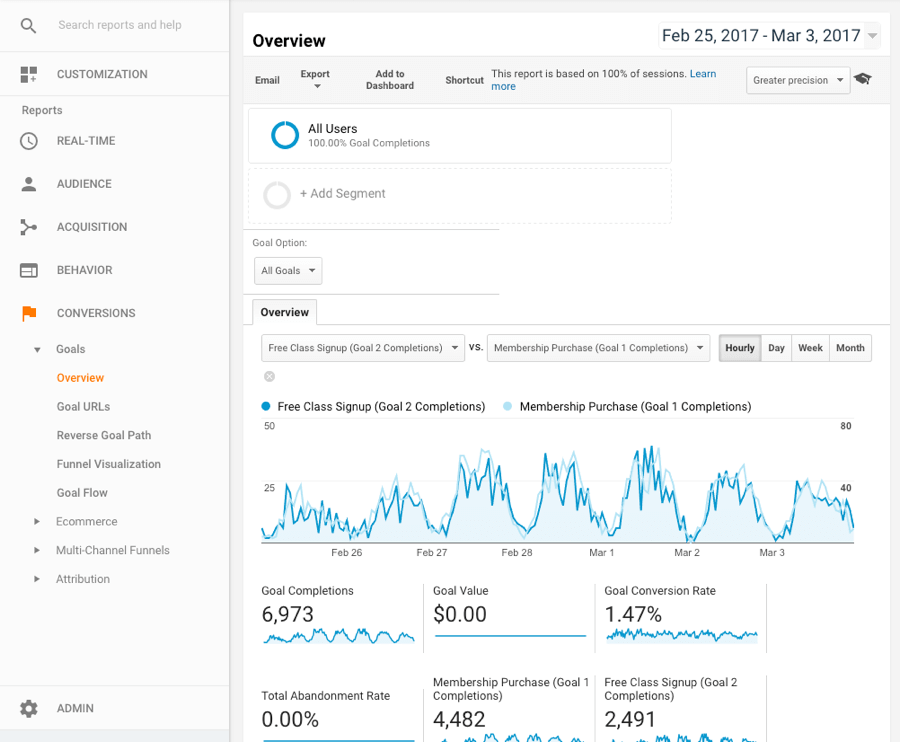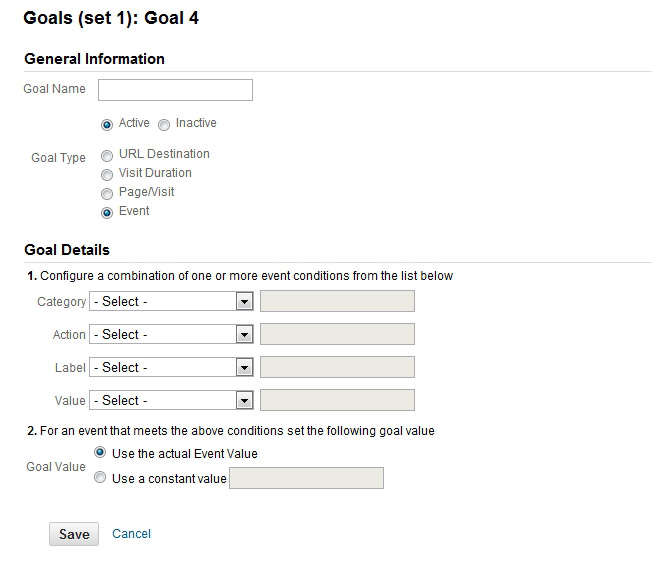Discover the Limitations of Google Analytics Goals: Unveiling the Data Kind That Remain Untrackable
As businesses increasingly count on data-driven decision-making, understanding the limitations of tools like Google Analytics becomes vital. While Google Analytics Goals offer beneficial insights right into customer interactions, there exist information types that elude tracking, posing challenges to a detailed understanding of individual actions. These untrackable data types question concerning the precision and efficiency of the analytics data that companies greatly trust for their digital strategies. Interested to reveal the surprise unseen areas in your information evaluation procedure?
Insufficient Individual Trip Tracking
Incomplete customer journey monitoring within Google Analytics can impede the capability to precisely analyze individual actions. When the customer trip is not completely tracked, there are voids in the data that prevent a comprehensive understanding of just how individuals engage with an internet site. This absence of understanding can cause missed out on possibilities for optimization and enhancements to the user experience.
One common problem with insufficient customer trip tracking is the failure to see the complete path that users take in the past completing an objective or leaving the website. Without this details, it is challenging to determine where individuals may be running into barriers or rubbing points that prevent them from converting. Additionally, incomplete tracking can obscure the effect of particular advertising initiatives or site changes on individual behavior.
To resolve this limitation, it is important to establish appropriate monitoring mechanisms within Google Analytics to capture the entire customer trip. This might entail establishing event monitoring, objective funnels, or utilizing devices like Google Tag Manager to guarantee that no vital communications go unrecorded. By getting a detailed sight of the user trip, web site proprietors can make more educated decisions to improve individual interaction and drive conversions.
Acknowledgment Obstacles
Navigating with attribution challenges in Google Analytics needs a complete understanding of how various touchpoints contribute to the overall conversion process. Attribution challenges arise from the intricacy of contemporary client trips, where users engage with multiple channels before converting.
One usual attribution obstacle is the trouble in attributing conversions to the appropriate source, particularly in cases where users engage with numerous channels before transforming. Additionally, cross-device tracking poses another attribution challenge, as individuals often switch over in between tools throughout their journey, making it testing to track their interactions seamlessly.
Offline Conversions
Given the difficulties connected with associating conversions precisely in online channels, the dimension of offline conversions offers a significant chance for marketing professionals seeking a much more detailed understanding of their consumers' journey. Offline conversions refer to actions that customers absorb the physical world, such as making acquisitions in brick-and-mortar shops or over the phone, going to events, or engaging with printed products - what data is google analytics goals unable to track. These conversions are crucial click for more for companies that run both online and offline, as they give useful insights right into the effectiveness of marketing projects throughout various touchpoints
Tracking offline conversions typically positioned a significant difficulty for marketing experts, as it was testing to link these activities back to particular on-line communications precisely. With developments in innovation, such as the integration of CRM systems, distinct identifiers, and voucher codes, companies can currently connect the gap between online and offline data to obtain a more holistic view of consumer habits. By properly determining offline conversions, online marketers can maximize their techniques, allocate sources a lot more effectively, and eventually enhance the overall consumer experience.
Cross-Device Monitoring
Cross-device monitoring plays an important role in comprehending the interconnected nature of consumers' electronic communications across numerous gadgets. In today's omnichannel world, where individuals perfectly switch in between mobile phones, desktops, and tablet computers, tracking their actions across my site these devices is essential for marketing experts to acquire a thorough view of their consumer trip.

Additionally, privacy worries and policies such as GDPR and CCPA have better difficult cross-device monitoring. With users requiring more control over their data and increased restrictions on monitoring modern technologies, marketing professionals should find cutting-edge and privacy-compliant methods to connect customer communications across devices.
Dynamic Web Content Interaction
Comprehending user involvement with dynamic web content is essential in optimizing digital advertising and marketing techniques for boosted audience interaction. Dynamic material refers to internet site aspects that alter based upon user actions, choices, or other factors, supplying a personalized experience. Nonetheless, tracking individual interactions with dynamic web content poses difficulties for conventional analytics devices like Google Analytics.
While Google Analytics can track basic communications like clicks and web page sights, it may have a hard time to capture even more nuanced interactions within vibrant content. what data is google analytics goals unable to track. Metrics such as time invested in specific vibrant aspects, hover actions, or communications within pop-ups are usually not quickly quantifiable utilizing typical tracking approaches. This limitation impedes marketing experts' capability to fully comprehend just how individuals are involving with vibrant content and tailor their methods appropriately

Conclusion
In verdict, Google Analytics goals have limitations in tracking insufficient user journeys, associating conversions precisely, catching offline conversions, tracking cross-device interactions, and gauging dynamic content engagement. These constraints highlight the significance of discovering additional tracking approaches and tools to obtain a more extensive understanding of individual behavior and conversions beyond what Google Analytics can offer.
While Google find out Analytics Goals offer useful insights into user interactions, there exist data kinds that avoid tracking, positioning obstacles to a thorough understanding of customer actions.Incomplete individual trip tracking within Google Analytics can impede the capability to properly assess customer behavior. When the individual trip is not totally tracked, there are voids in the data that protect against a detailed understanding of how individuals communicate with a website.One usual issue with incomplete user trip monitoring is the failure to see the full path that users take before completing an objective or leaving the site. By obtaining a thorough view of the user trip, website owners can make even more educated decisions to improve customer involvement and drive conversions.